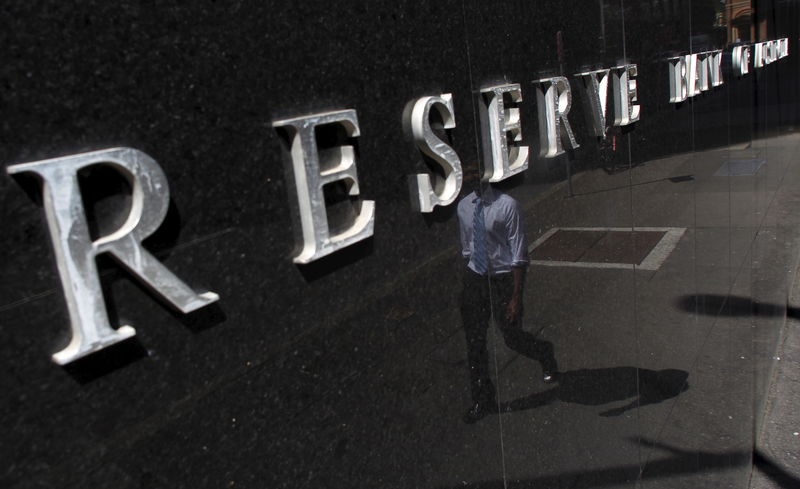S&P 500 falls as traders turn sour on tech
Investing.com-- The Reserve Bank of Australia is widely expected to leave interest rates unchanged at the conclusion of a two-day meeting on November 4, with markets bracing for a hawkish outlook amid sticky local inflation.
The RBA is expected to leave its benchmark rate at 3.60%, after a 25 basis point cut last month.
The central bank cut rates by a cumulative 75 basis points so far in 2025, amid some signs of cooling inflation and labor market weakness.
But local data in recent months showed inflation grew sharply in the third quarter, while the labor market was also seen remaining largely resilient despite some trade and economic headwinds.
RBA Governor Michele Bullock had also characterized the inflation data as “a material miss,” and is expected to present a hawkish outlook in her post-meeting address.
ANZ analysts said they expect the RBA’s rate-setting board to unanimously agree on a hold in November, citing the magnitude of the recent inflation increase.
“If the activity backdrop proves materially weaker than anticipated, the Board has the option of easing in December. However, in the wake of the CPI outturn, the hurdle for any easing this year is now very high and would likely require a further move higher in the unemployment rate (with an unfriendly mix of details) and a weak Q3 GDP,” ANZ analysts wrote in a recent note.
They added that they expect the RBA to cut rates by 25 bps one final time in the first half of 2026, and that rates will remain unchanged for the remainder of 2025.
Westpac analysts also expect the RBA to keep rates unchanged in November, with Australian inflation turning “too hot to handle.”
Westpac analysts noted that the RBA will only have enough confidence to next consider rates by February 2026, with the fourth-quarter inflation data. A monthly inflation print for October will be unlikely to change the RBA’s stance in December, indicating that a hold then is also likely.
“Given where the RBA’s attention is directed, we think it will keep rates on hold until it is satisfied that inflation from (the third) quarter is contained,” Westpac analysts wrote in a recent note.
How will the ASX 200 react?
Australian stocks had fallen sharply following the hot third quarter inflation data, and struggled to make headway since.
The benchmark ASX 200 was nursing four consecutive sessions of losses going into the RBA meeting, and was trading well below record highs hit earlier in October.
A hawkish hold is likely to further unsettle Australian stocks, although losses are expected to be limited by some strong September quarter earnings and resilience in cyclical stocks.
How will AUDUSD react?
The Australian dollar firmed sharply after the third quarter inflation reading, although its gains were cut short by hawkish signals from the U.S. Federal Reserve, which supported the U.S. dollar.
But any hawkish signals from the RBA are likely to support the Aussie, especially if Bullock explicitly dismisses bets on more interest rate cuts.
The Australian dollar’s AUD/USD pair was trading slightly higher in the lead-up to the RBA meeting.
